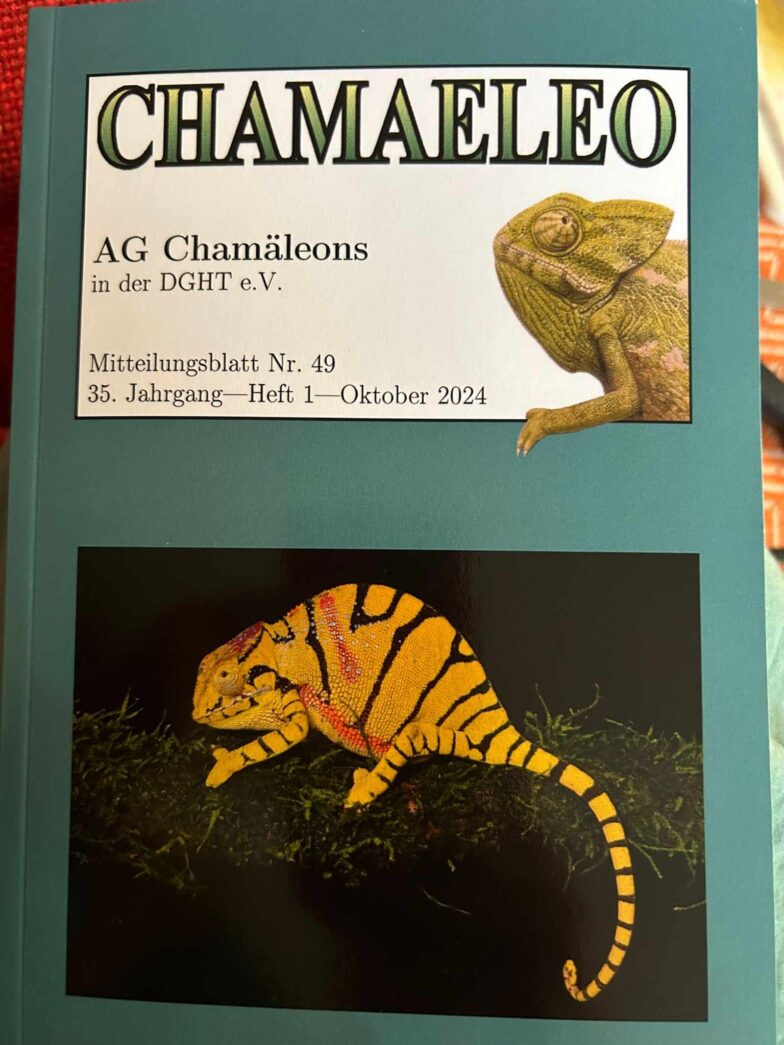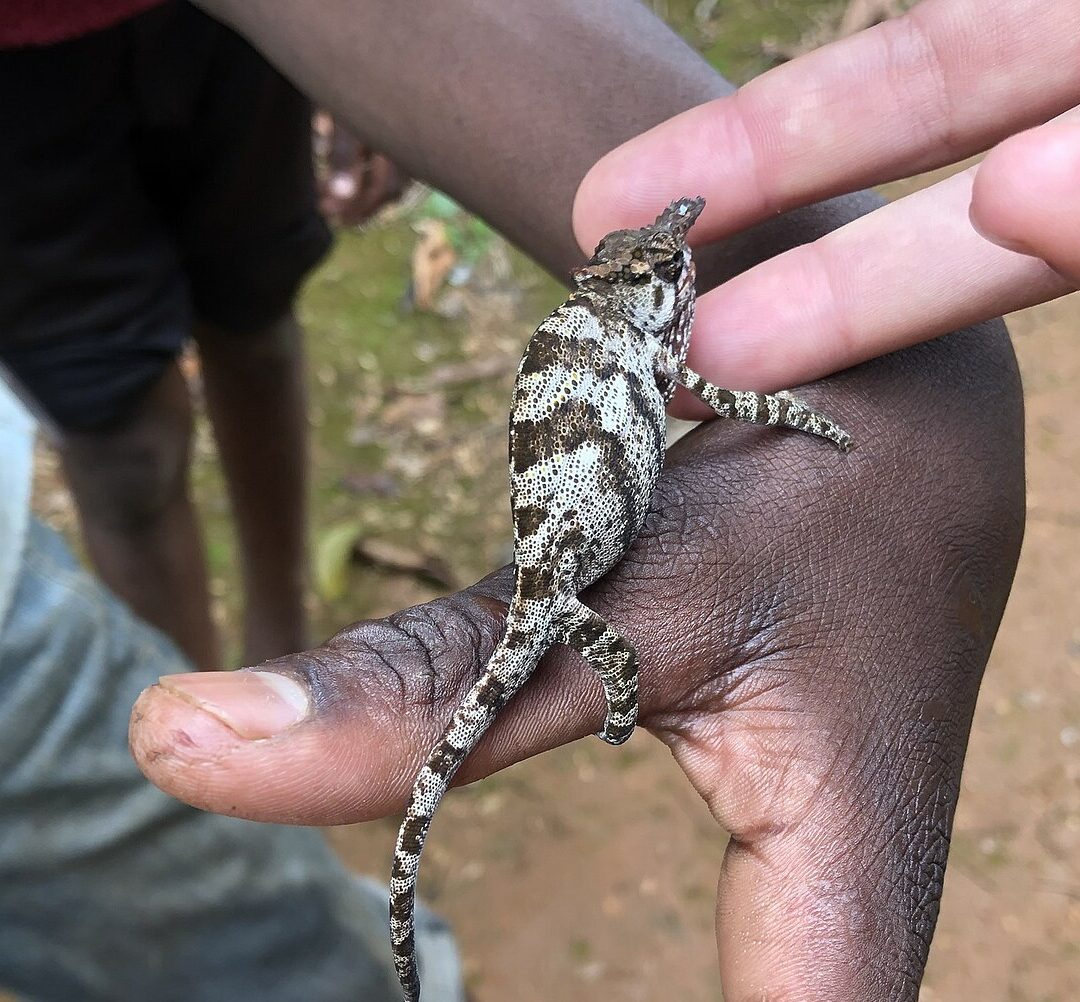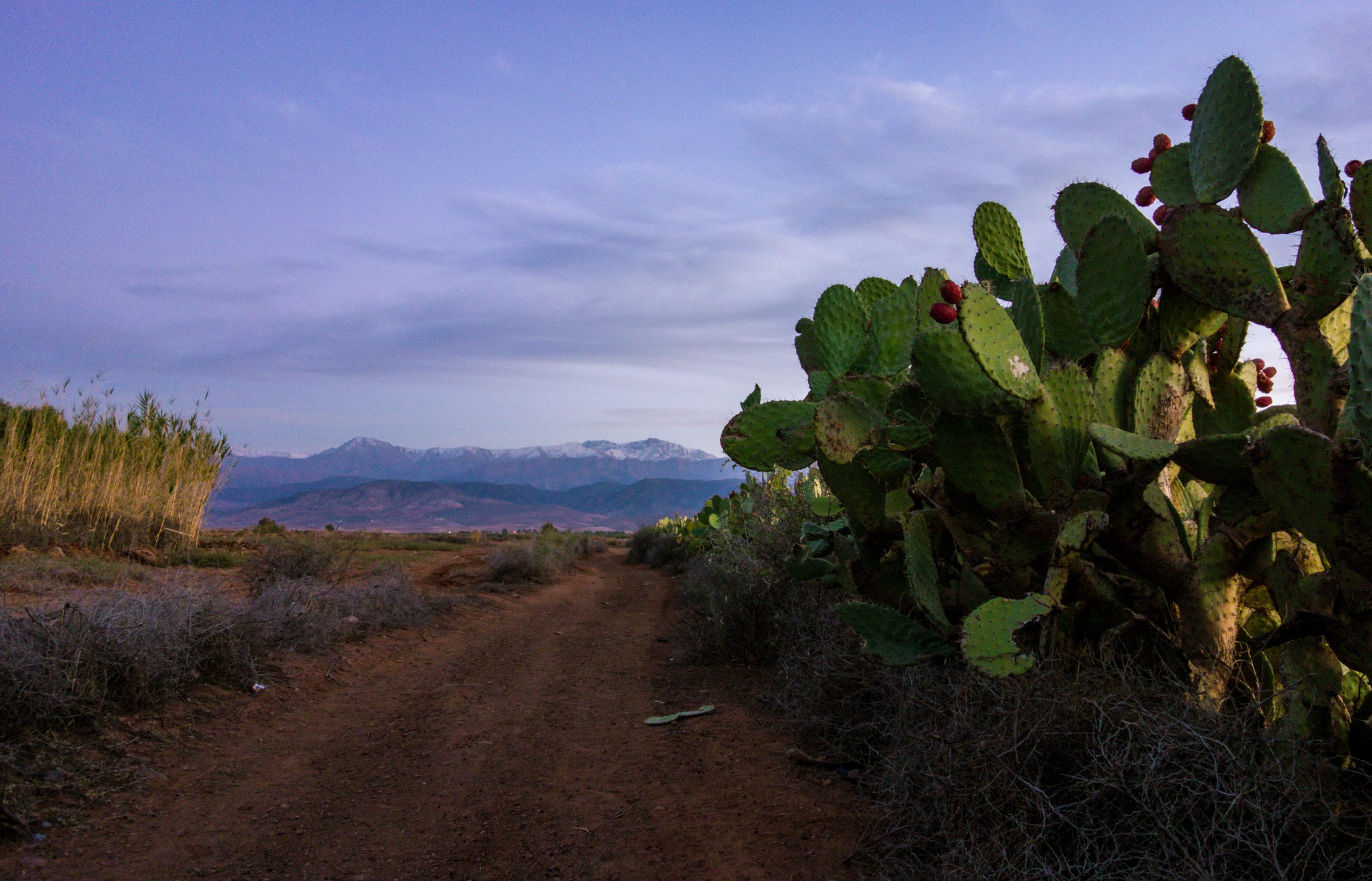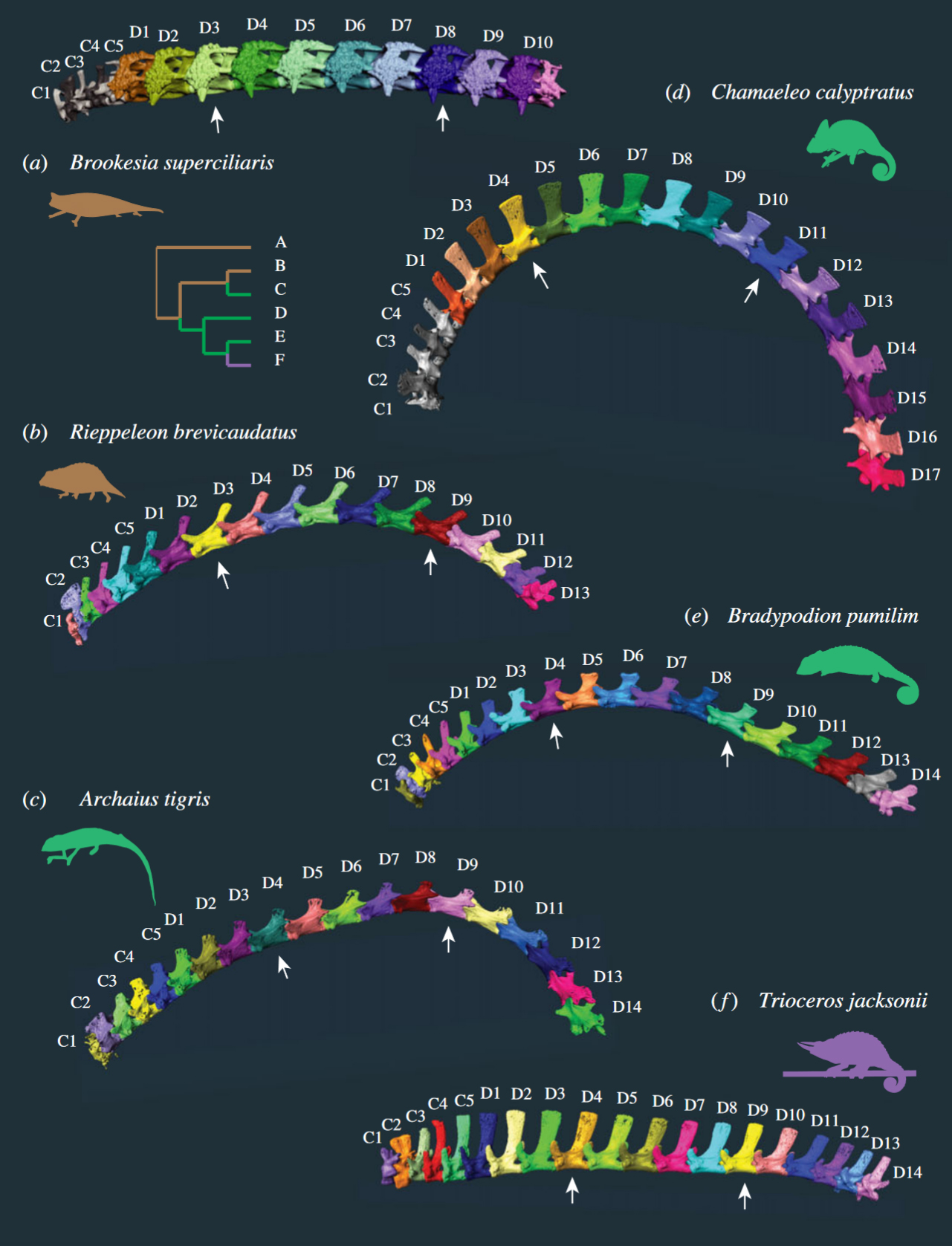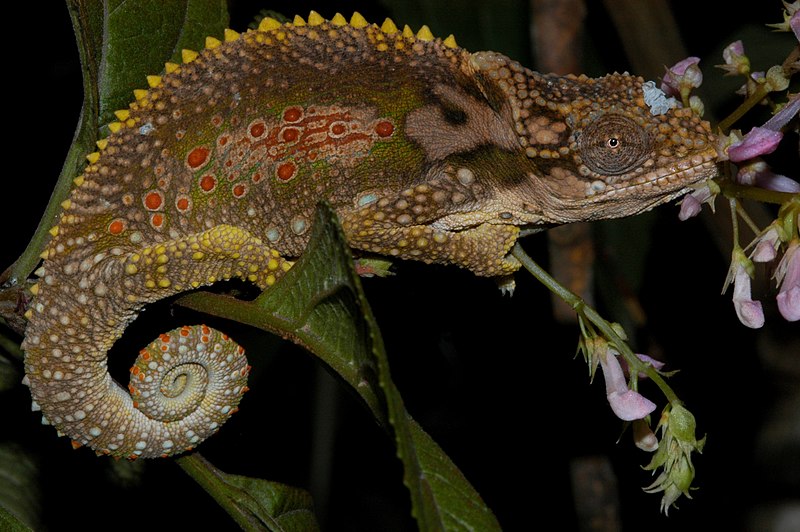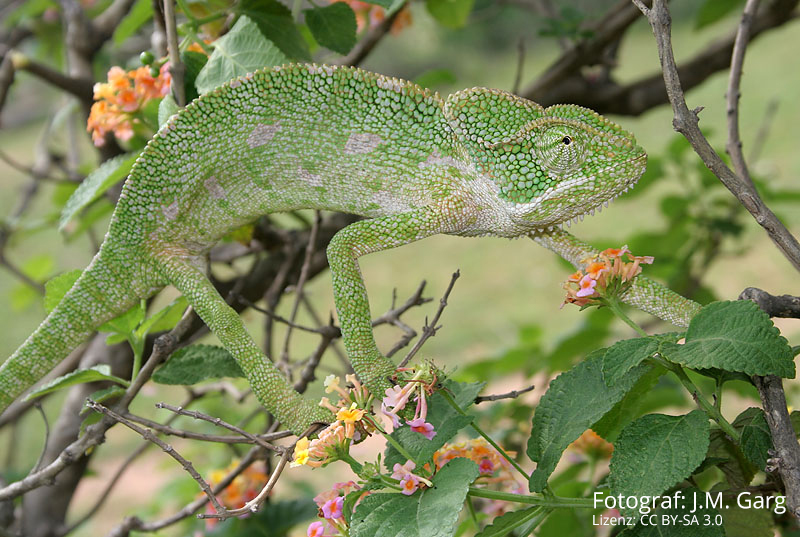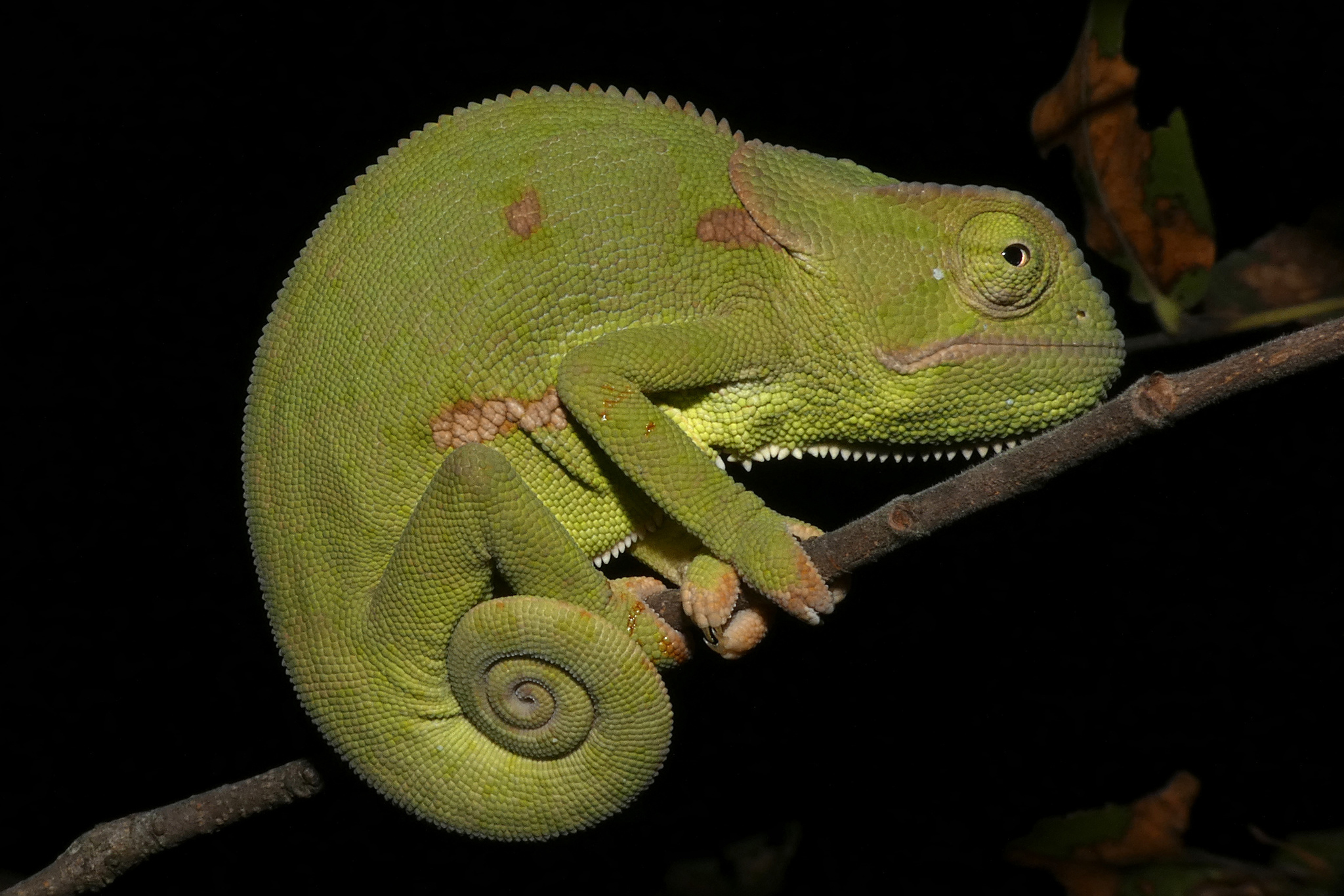Good things come to those who wait: we have just received the latest issues of CHAMAELEO 49. They will now go into the mail as soon as possible and will then be on their way to all AG members. The current contents can be found here. And if you are not yet a member of the AG Chameleons, you might want to become one soon! How do you like the current issue? Do you have any comments, wishes or criticism? Too thick, too thin, too much English, too little? ;) We look forward to your feedback!
New data on the international trade in chameleons
ScienceResearchers from several universities recently analysed the international trade in chameleons. The focus was on Tanzania in East Africa. Tanzania is currently home to 41 of the 228 known species, making it the country with the second-highest number of chameleon species after Madagascar.
The study was based on the publicly accessible CITES trade database and the annual reports of the countries participating in the Washington Convention on International Trade in Endangered Species of Wild Fauna and Flora. Chameleons exported for scientific or non-commercial purposes were excluded. In addition, the most frequently clicked websites on the Internet in the form of English-language sales platforms, social media and forums were searched for sale and purchase adverts for chameleons using Google and “[species] for sale”. A total of 14 websites of commercial sellers, two online forums, two advertising websites, four social media sites and seven closed groups in social media were analysed. As a third pillar of the study, villagers in the Eastern Arc Mountains in Tanzania were interviewed using a questionnaire with eleven questions.
The general result of the study is that the international trade in chameleons fell rapidly between 2000 and 2019. At the same time, the number of chameleons bred in captivity increased. The number of “ranched” chameleons, i.e. chameleons bred on a farm in the country of origin for export, fell slightly. The largest export factor was commercial trade, with almost all species being exported directly from their countries of origin and not via other intermediaries in other countries. From 2000 to 2019, a total of 327,522 chameleons were legally traded. Only six countries accounted for 91% of exports: Tanzania, Madagascar, Mozambique, Uganda, Ghana and Cameroon. Tanzania was the country from which the most chameleons were traded, accounting for 34% of all exports. The country to which most chameleon exports went was the USA with 46%. The USA thus received almost half of all chameleons traded under CITES worldwide between 2000 and 2019. Other countries with relatively high numbers of chameleon imports were Japan (13%) and Germany (10%).
Six chameleon species from Tanzania were particularly sought after. Together they accounted for 85% of the trade in chameleons in the period mentioned. Kinyongia fischeri and Kinyongia tavetana were exported most frequently, followed by Trioceros werneri, Trioceros deremensis and Trioceros fuelleborni. Of the 42 species occurring in Tanzania, 35 were found for sale on online platforms and 29 were regularly on sales lists.
The on-site surveys in Tanzania revealed that only two out of three mountain ranges observed had participated in the trade in chameleons (East Usambara and Uluguru). As Tanzania has suspended its exports indefinitely since 2016, the majority of respondents stated that there is currently no longer any trade in chameleons. Interestingly, the villagers stated that they had collected 13 species for trade, but 7 of these species never appeared on the official exports for Tanzania. The answers to the question of how many chameleons of which species were traded also differed significantly from the official figures in the perception of the local population: While locals reported “thousands” of chameleons with one horn as supposedly collected annually, only very isolated ones of these were actually exported. There may also be a strong divergence here due to a lack of species differentiation.
Trade routes in Tanzania could be traced quite well through the interviews. In general, traders from Muheza and Morogoro came to the Usambaa and Uluguru mountains and gave the villagers a desired number of certain species (selected according to “one horn, two horns, three horns or giant”). A time limit was set, after which the traders returned and transported the collected chameleons to Dar es Salaam for export. One trader was questioned more intensively and stated that his father had already traded in chameleons. He had also never seen a collection permit, even though his clients always emphasised that they had one. The middlemen and collectors had no interest in what the collected chameleons were to be used for, only what was paid for them. Even a middleman only received 0.4 US dollars per chameleon.
Status and trends in the international wildlife trade in Chameleons with a focus on Tanzania
Maxim Conrad Isaac, Neil D. Burgess, Oliver J.S. Tallowin, Alyson T. Pavitt, Reuben M. J. Kadigi, Claire Ract
PLoS ONE 19(5), 2024.
DOI: 10.1371
Picture: Kinygonia tavetana, photographed by Elizabeth Dougherty, Creative Commons Attribution 4.0 International
Presentation in Kassel about Morocco
Reiseberichte Live lecturesOn Saturday, 16 September 2023, Uwe Prokoph will give a lecture on a herpetological journey to the Western Sahara and the south of Morocco. Although the landscape there seems rather hostile at first glance, there is a lot to discover, especially in reptiles!
Uwe Prokoph Desert Wonderworlds
DGHT Stadtgruppe Kassel
House Schönewald
Wilhelmstraße 17
34233 Fuldatal
from 6 o’clock p.m.
Spines of tree- and ground-dwelling chameleons
Tiermedizin ScienceVarious anatomical adaptations of the spine between ground and tree dwellers are known from mammals, especially primates. In some cases, the different vertebrae are even associated with certain movement patterns and bodily functions. In a comparative study, two scientists from New York (USA) have now investigated how the spine of ground- and tree-dwelling chameleons differs.
They measured the already existing CT scans on Morphosource.org of a total of 28 chameleons of different species. Brookesia perarmata, Brookesia superciliaris, Brookesia thieli, Palleon nasus, Rhampholeon platyceps, Rhampholeon spectrum, Rieppeleon brevicaudatus and Rieppeleon kerstenii were classified as ground dwellers. Archaius tigris, Bradypodion melanocephalum, Bradypodion pumilum, Bradypodion thamnobates, Calumma amber, Calumma brevicorne, Calumma parsonii, Chamaeleo calyptratus, Chamaeleo gracilis, hamaeleo zeylanicus, Furcifer lateralis, Furcifer pardalis, Furcifer verrucosus, Kinyongia carpenteri, Kinyongia tavetana, Kinyongia xenorhina, Nadzikambia mlanjensis, Trioceros feae, Trioceros jacksonii and Trioceros quadricornis were considered arboreal. The vertebrae were counted and the width of the lamina, length, width, height of the vertebral body, and the height of the spinous process and transverse processes on each vertebra were measured. In addition, the so-called prezygapophysial angle was determined. This is the angle of the intervertebral joint, i.e. the contact surfaces between the individual vertebrae. The measurements of ground and tree dwellers were compared and statistically evaluated. Only the vertebral column of the trunk was considered, the caudal vertebral column was left out.
First of all, the results showed that ground-dwelling chameleons generally have fewer trunk vertebrae (15 to 19) than tree-dwelling chameleons (18 to 23). The trunk spine of almost all species could be divided into the already known three areas: Cervical spine and anterior and posterior dorsal spine. A thoracic and lumbar spine as in mammals is generally not distinguished in chameleons because of the continuous ribs. Five chameleon species had four regions instead of three: they had an anterior and a posterior cervical spine, the anterior one consisting of only two vertebrae with rib processes. Six chameleon species had two additional lumbar vertebrae and one species had three transitional vertebrae in the region between the cervical and dorsal spine. In Kinyongia carpenteri, a total of five regions could be distinguished in the trunk spine: The chameleon had anterior and posterior cervical vertebrae as well as anterior and posterior dorsal vertebrae and two additional lumbar vertebrae. Brookesia perarmata was also a special case: the trunk spine of this chameleon consisted of only two regions and at the same time the smallest number of vertebrae of all species studied.
The greatest differences between ground and tree-dwelling chameleons were found in the prezygapophyseal angle (PZA) and the height of the spinous process. The intervertebral joint surfaces in the anterior dorsal vertebrae of tree-dwelling chameleons were clearly more dorsoventrally oriented and smaller than in ground-dwelling species. Several tree-dwellers showed a PZA of less than 90°. In tree-dwelling chameleons, the largest spinous processes were located at the transition from the cervical to the dorsal spine. Among the ground-dwelling species, the spinous processes were similar only in Palleon nasus. In ground-dwelling chameleons, the appearance of the spinous process varied greatly. Rieppeleon, for example, showed narrow, backward-sloping spinous processes, while the spinous processes in Brookesia were more like a kind of bone bridge than a process. Archaius tigris was an exception: The spinous processes in this chameleon hardly differed along the entire spine.
The authors conclude from the results that the anatomy of the different vertebrae is strongly related to the chameleons’ way of life and different locomotion. The intervertebral joint surfaces in tree-dwelling chameleons are probably important for climbing by supporting the function of the shoulder girdle. Reduced mobility in the mediolateral plane provides greater trunk stiffness, which facilitates climbing in arboreal dwellers. Stiffening of the axial skeleton (skull, trunk spine and thorax) is also known from tree-dwelling mammals. The larger spinous processes in larger chameleons could facilitate shoulder girdle rotation and muscle movement, resulting in increased stride length, better head support, and thus possibly easier feeding.
Morphological and functional regionalization of trunk vertebrae as an adaption for arboreal locomotion in chameleons
Julia Molnar, Akinobu Watanabe
Royal Society Open Science 10, 2023: 221509
DOI: 10.1098/rsos.221509
Illustration: Spines of different chameleon species
Species diversification in chameleons
ScienceFrom earlier studies, we know that the first chameleons evolved in the late Cretaceous, about 90 million years ago, on mainland of Africa. Around the border between the Cretaceous and Tertiary periods, about 65 million years ago, different species began to evolve. It is still unclear today which factors contributed to the diversity of species. Two researchers from Swansea University in Wales have now used various computational models of phylogenetics to investigate what might have influenced diversification (the splitting of chameleons into many different species).
First, they studied the diversification of chameleon species in Madagascar. In terms of evolutionary history, there are two points in time when chameleons apparently spread across the sea from mainland Africa to Madagascar. One is about 65 million years in the past, the other 45 million years. You could now think that the climatically extremely different habitats in Madagascar could have driven the evolution of the species very quickly after the spread across the sea. To the surprise of the researchers, however, no evidence of this was found. The species richness of chameleons on Madagascar must therefore come from the fact that chameleons spread there very early and thus simply had much more time to develop into different species than elsewhere.
Furthermore, the researchers investigated whether switching between two ecomorphs – from ground-dwelling stub-tailed chameleons to tree-dwelling chameleons with longer tails – had an impact on species diversity. Rather surprisingly, this did not seem to be the case. The evolution to tree-dwellers with longer tails occurred relatively early on one or two occasions. No evidence could be found that different ecomorphs accelerated diversification. Instead, speciation rates were found to slow down progressively over the last 60 million years. Only a very early dispersal event of the genus Bradypodion in South Africa around 10 million years ago was accompanied by a two- to fourfold diversification rate.
As a third focus of the study, the researchers examined the genus Bradypodion. During the climate change in the Miocene around 10 million years ago, South Africa changed a lot. Forests disappeared, leaving behind isolated forest habitats and, in between, savannahs, some of which are now so-called hot spots of biodiversity. Two of them, the Cape Floristic Region at the southwestern tip of South Africa and Maputuland-Pondoland-Albany on the east coast of South Africa, are home to a particularly large number of Bradypodion species. Each species is limited to a geographically very clearly defined area. The researchers, therefore, suspect that Bradypodion species have actually evolved faster under the influence of habitat change. It should be noted that the diversification rate of the genus Bradypodion is probably rather underestimated, as there are still many hidden species to be assumed.
Diversification dynamics of chameleons (Chamaeleonidae)
Stephen Giles, Kevin Arbuckle
Journal of Zoology, 2022
DOI: 10.1111/jzo.13019
Factors in the geographical dispersal of chameleons
ScienceFor a long time, people have been trying to find out how and why chameleons have spread across the African continent, to islands and as far as Europe and Asia. French scientists, in collaboration with international colleagues, have now used phylogenetics and various computational models to investigate how the factors of body size, coastal habitat and extreme lifestyles may have affected the distribution of different chameleon species. The study examined 181 species divided into nine main biogeographical regions: North Africa and Arabia, Central Africa, Southeast Africa, Southwest Africa, India, Socotra, Madagascar, Comoros and Seychelles.
Chameleon species that occurred more than 10 km from the sea historically spread significantly less than the 74 coastal chameleon species. A similar phenomenon is known from skinks and crocodiles. Dispersal probably took place mainly along the coasts, mostly on the same continent and only rarely across the water to other continents or islands.
The size of the different chameleons also seems to have influenced their dispersal throughout history: Large chameleons spread further and more frequently than small chameleons. This could be related to the fact that larger chameleons have a lower metabolic rate – so they need less energy overall relative to smaller competitors. In addition, larger chameleons lay clutches with significantly more eggs, which simply gives them an advantage in numbers.
A somewhat unexpected result came from the study of different life cycles. One would initially assume that short life cycles are associated with faster dispersal. In fact, the calculations showed that especially chameleon species with extreme life cycles spread further. Thus, those that reproduced particularly slowly or particularly quickly were historically more successful among chameleons than the species “in the middle”. In this regard, the authors consider whether particularly slow life cycles with late sexual maturity and long gestation might be more successful on the same continent, while faster reproductive strategies with large clutches are more favourable for dispersal across the sea to islands and other continents. In line with this, Furcifer polleni and Furcifer cephalolepis in Comoros and Chamaeleo zeylanicus in India, all three examples of aquatic dispersal, have a very fast life cycle.
The 34 chameleon species with the combination of living close to the coast, large size and extreme life cycle had a 98% higher dispersal rate than species without these characteristics. All in all, this is certainly a very theoretical study, but it nevertheless provides exciting insights into the historical distribution and dispersal of chameleons.
Chameleon biogeographic dispersal is associated with extreme life history strategies
Sarah-Sophie Weil, Laurie Gallien, Sébastien Lavergne, Luca Börger, Gabriel W. Hassler, Michaël P.J. Nicolaï & William L. Allen
Ecography
DOI: 10.1111/ecog.06323
Hidden species within the genus Chamaeleo
ScienceThanks to genetic studies, the identification of species is much more precise today than it was a few decades ago. However, genetics always raises new questions. The genus Chamaeleo currently has 14 species. Scientists from South Africa have now investigated whether there might be other ‘hidden’ species of the genus Chamaeleo. At the same time, they investigated where the origin of the genus Chamaeleo might lie. For this purpose, the genetic material of all 14 species recognised so far was examined. Exciting results came to light: of the fourteen Chamaeleo species, thirteen were confirmed, but one was questioned. In addition, several new candidate species were identified.
The two different populations of Chamaeleo anchietae in western Angola and in south-eastern Congo and Tanzania probably represent two different species. If the animals from the Democratic Republic of Congo and Tanzania were true to be elevated to species status in the future, they would have to be named Chamaeleo vinckei according to taxonomy and a species description from 1950.
Chamaeleo gracilis seems to hide – which would not be surprising due to its wide distribution – at least three independent species. The “real” Chamaeleo gracilis would be found in Liberia, Sierra Leone and Guinea. The other two groups originate from the triangle of countries between Chad, Cameroon and the Central African Republic and from the border between Kenya and Tanzania. Unfortunately, only single specimens of Chamaeleo gracilis have been sampled, so no more far-reaching recommendation on the splitting of species can be made at this point.
The flap-necked chameleon (Chamaeleo dilepis), currently described as a single species, could contain a total of three species. One of the genetically distinct populations occurs in eastern Africa in Tanzania and Rwanda, while a second species is found in southern and eastern Africa, from South Africa through Botswana, Zambia, Namibia, Mozambique and Malawi to southern Tanzania. The third species would be distributed in west central Africa between Angola and the Congo. None of the candidate species matches the eight subspecies described so far purely on the basis of appearance. Therefore, a complete review of the previous subspecies, their status and the species status of the three newly emerged clades is necessary.
The results of the study on Chamaeleo necasi from Benin are also interesting. It turned out that the genetics identified the sampled animal as Chamaeleo gracilis. However, the specimen itself was not examined by the researchers. It could be a Chamaeleo gracilis misclassified by its appearance. In this case, the specimens used for the species description in 2007 would have to be viewed and sampled again in order to obtain more information about the actual species’ status.
In the course of the genetic investigations, the researchers found out that the origin of the genus Chamaeleo probably lies in South Africa. Chamaeleo namaquensis, the only terrestrial chameleon of the genus Chamaeleo, split off from the other Chamaeleo species as early as 40 million years ago in the Eocene. This makes the Namaqua chameleon from the Namib Desert and Damaraland the “oldest” chameleon of the genus Chamaeleo. Chamaeleo anchietae followed about 29 million years ago.
Out of southern Africa: origins and cryptic speciation in Chamaeleo, the most widespread chameleon genus
Devon C. Main, Bettine Jansen van Vuuren, Colin R. Tilbury & Krystal A. Tolley Conceptualisation
Molecular Phylogenetics and Evolution, Volume 175
DOI: 10.1016/j.ympev.2022.107578

